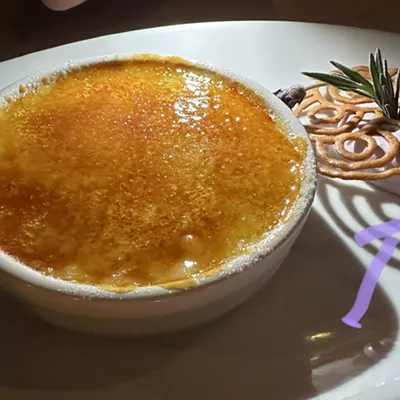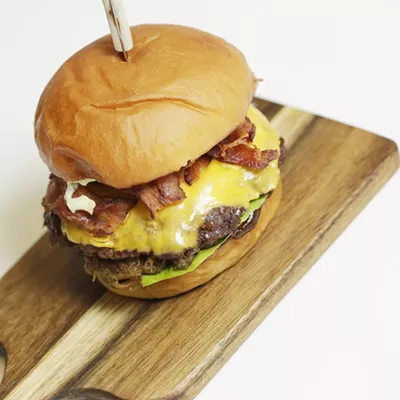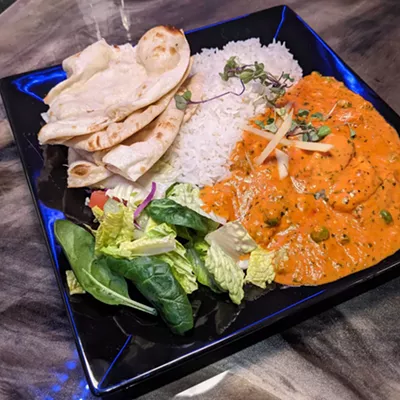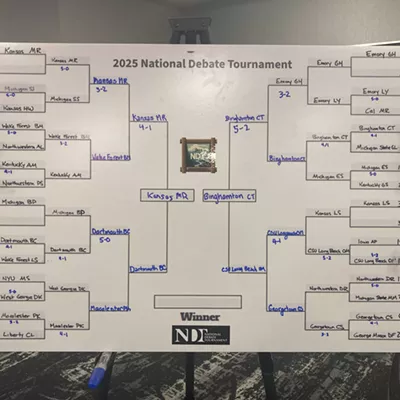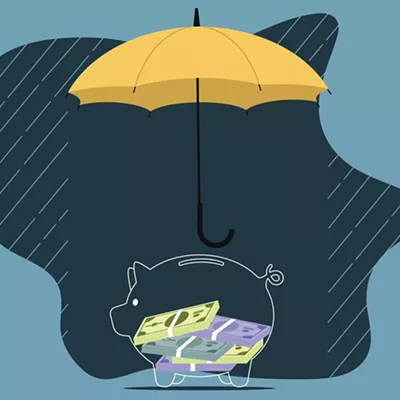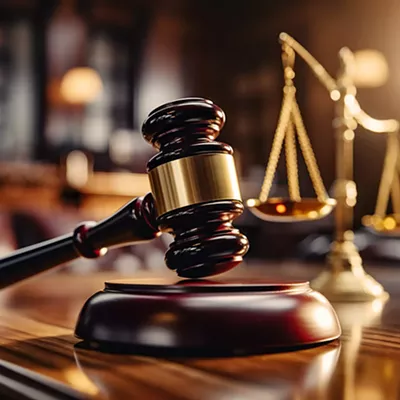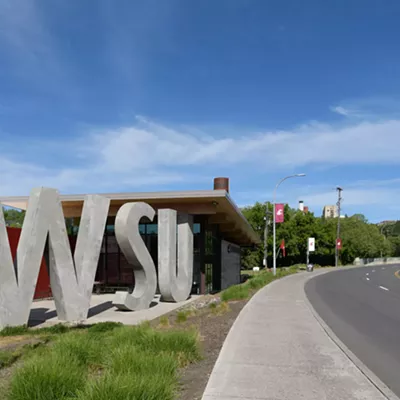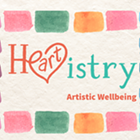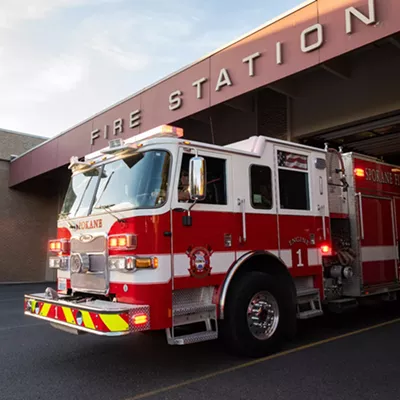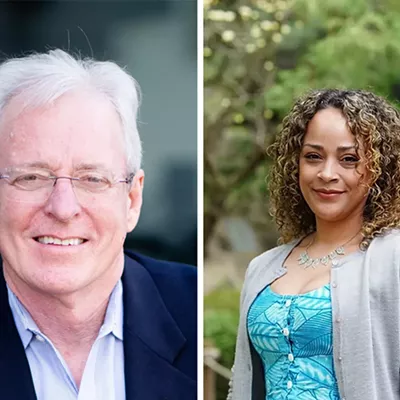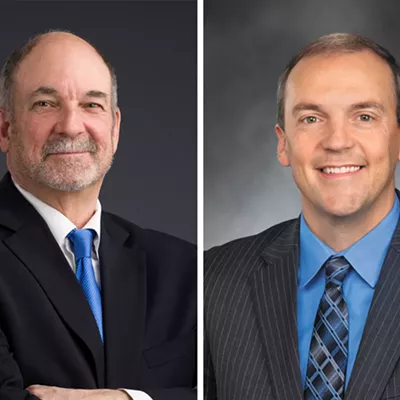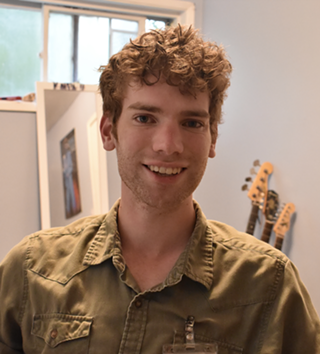
A program to fund street art in Spokane keeps getting attention for all the wrong reasons.
In 2022, the Spokane City Council passed a three-year pilot program called Asphalt Art, which set aside nearly $1 million to pay for colorful crosswalks and street murals across the city.
The large Pride flag on Spokane Falls Boulevard was the first mural to be painted through the program. It's had a rocky tenure: Since its installation in June 2023, the mural has been subject to repeated anti-LGBTQ+ vandalism.
In May this year, a few weeks after it was repainted to cover previous vandalism, a group of people set the mural on fire. Community members raised $15,000 to help fix the damage. But on June 5, just hours after it was repainted yet again, police arrested three young people who allegedly yelled a homophobic slur at a witness and used Lime scooters to create skid marks on the mural. On June 11, the mural was vandalized yet again, this time with paint.
The repeated vandalism has put the mural in the spotlight — prompting debate over how the city spends money and vitriolic commentary from culture war media aggregators like Libs of TikTok.
But the ongoing noise overshadows the fact that the Pride mural is only one part of a larger effort to create street art across the city. In addition to the Riverfront mural, the Asphalt Art program was created to fund street murals in each of Spokane's 29 neighborhood council districts.
Only one neighborhood — Hillyard — has finished choosing a design and painting its mural so far. But Shelby Allison, who manages the Asphalt Art program for Spokane Arts, a nonprofit contracted to administer the program, says people should expect to see many more over the coming year.
"It's crazy, because the only part of the program that has been getting any visibility is the one that's had the problems with being defaced," Allison says. "But there's a lot more happening."
The Asphalt Art program is funded by money from the city's traffic calming fund, which collects revenue from the city's automatic red light and speeding cameras.
The traffic calming fund is typically used to pay for traditional infrastructure designed to slow drivers down, such as stop signs and speed bumps. But City Council member Zack Zappone and others who advocated for the Asphalt Art program say research has shown that colorful murals in the street can have similar effects.
Of the nearly $1 million allocated to Asphalt Art, $300,000 was directed to fund two painted crosswalks in each of the three City Council districts. The rainbow Pride crosswalk on Perry Street, which has also been subject to repeated vandalism, was the first crosswalk funded through the program. Allison says the designs for the others will be different, and that an online portal will go live in coming months, allowing people to vote on where they'd like the rest of the artistic crosswalks to go.
The rest of the money — $672,750 — is set aside to fund intersection street murals in each of the city's neighborhood council districts. Each neighborhood council has the opportunity to choose the location and work with a local artist on a design that fits their area's themes and character.
The Hillyard neighborhood became the first to complete the process when they installed their mural at an intersection next to James J. Hill Park in early June this year. The neighborhood council worked with local artist Matt Smith to create a mural featuring two outstretched hands with rainbow-colored arms inside a sun — an homage to the Children of the Sun Trail. It also has images of a boxcar and a cowboy hat.
"Their neighborhood wanted to focus on the diversity in Hillyard," Allison says. "They were really excited to apply because they don't have a lot of city sponsored public art."
The Manito/Cannon Hill neighborhood will become the second to complete the process when they begin installation of their mural on Monday, July 1.
The Manito mural, designed by local artist Chris Bovey, will be painted at an intersection on 25th Avenue next to The Scoop ice cream shop. It features an image of a turkey surrounded by lilacs, people on bikes, The Scoop ice cream truck and a wildcat — the mascot for nearby Wilson Elementary School.
Several other neighborhoods also have murals in the pipeline.
The Browne's Addition Neighborhood Council has finalized a design with artist Carly Ellis and plans to begin painting in July. The Shiloh Hills Neighborhood Council is working with artist Susan Webber on a mural that will be painted in September. The Logan, West Central, Latah/Hangman, Lincoln Heights and Chief Garry Park neighborhood councils are also in varying stages of design and connecting with artists, Allison says.
"We're going to be very busy next year," Allison says.
Twenty neighborhood councils have yet to apply to the program. Allison hopes the ones that are on the fence will decide to get involved once they see how the first few murals turn out. (The pilot project ends in December 2025; if it's not renewed any unspent funds will return to the city.)
A few neighborhoods are opting out. During a town hall meeting earlier this month, Comstock Neighborhood Council Chair Jeff Mergler told City Council members that his neighborhood had explored a number of designs, but ultimately decided the project wasn't feasible. The neighborhood had trouble finding a location that would meet all the parameters, and also worried about the mural fading and becoming an eyesore.
"We really tried to make this work for us, it just didn't work out," Mergler said. "We would rather have the money go back into the traffic calming budget."
Grandview/Thorpe Neighborhood Council Chair Joy Sheikh said her neighborhood is also passing on the opportunity because of a lack of suitable locations.
Allison says she spoke with one other neighborhood council — she doesn't want to name them — that was "completely not interested." But other than that, she says there's been a lot of enthusiasm.
"The neighborhoods are really excited about these," Allison says. "It beautifies your neighborhood, and it's a quick way to get some sort of traffic calming."
When the murals eventually fade, Spokane Arts will help remove them, Allison says. If the city decides to extend the pilot program, the murals might get repainted or replaced with a different design.
There isn't any data yet on the art's effectiveness in Spokane, but Allison says the city is planning to install solar-powered traffic counters at several locations to track average speeds before and after the art is installed. ♦



